30 major attractions in Rome
The main difficulty you will face when first getting acquainted with the Eternal City is the need to decide which sights in Rome to visit first. At every step you’ll come across an interesting museum, a picturesque square, an ancient church, ancient ruins or other remarkable places and buildings. We have prepared a useful list of the most popular sights in Rome. We hope it will help yоu to plan your trip. Welcome to Rome!
» See more – 100 tips for your trip to Rome
Colosseum
Of course, tourists primarily associate Rome with the Colosseum, so it is rightly considered the main attraction of the city. The most famous amphitheater in the world is also the oldest building in the world, symbolizing Rome in the period of Antiquity. The Colosseum is visual proof of the architectural art of the ancient Romans, and seeing it means we can recreate, at least in our imaginations, the gladiatorial fights that unfolded in this arena. Construction of the Colosseum was initiated by Emperor Vespasian of the Flavius dynasty in 72 AD and was completed by his son Emperor Titus in 80 AD, so the Colosseum is also known as the Flavius Amphitheatre.
» See more – Everything tourists need to know about the Colosseum
Address: Piazza del Colosseo.
Subway station: Colosseo.
Open daily from 8:30 am to 3:30 pm.
Tickets to the Colosseo: 16€ (also includes the Roman Forum and the Palatine hill) but you have to queue in the heat. You can book a ticket with priority admission online for 25 euros.
Vatican Museums
The Vatican itself is a separate destination in Rome, but the museums located there deserve special attention. They contain world masterpieces of art, the crowning glory of which is the famous cycle of frescoes by Michelangelo, who decorated the ceiling of the Sistine Chapel. Of course, the Sistine Chapel is of major interest to most tourists visiting the Vatican museums, but don’t ignore the other works of art displayed there: the statue of Laocoon, which started the history of Vatican museums, the collection of paintings in the Borgia apartments, rooms painted by Raphael and named Stanze de Raffaello “Raphael Rooms” in his honor, and other important exhibits. Of course, the museums of the Vatican should be visited with an audio guide, or better yet, with an art historian who will give a fascinating tour; find out more here.
Address: Viale del Vaticano.
Subway stop: Ottaviano.
Open Mondays to Saturdays from 9 a.m. to 6 p.m.
Ticket price: 24 Euro. To buy tickets and skip the lines, see here.
St. Peter’s Basilica
Another iconic Vatican attraction that every visitor to Rome rushes to see is St. Peter’s Cathedral, the center of Christianity and the second largest church in the world. The location of the cathedral was not chosen at random: it is believed that it was here the apostle Peter was executed and then buried. The apostle Peter is considered the first Pope, which led to the erection of a church bearing his name in the heart of the Vatican. In addition to its great religious significance to Christianity, St. Peter’s Cathedral is also notable as a work of art by the best architects and artists in Italy, including the great Michelangelo. Under his direction, the cathedral’s famous dome was created, and you can now climb up there yourself during this guided tour.
Take time to enjoy the beautiful view from the cathedral’s dome, and read about other viewing points in Rome in our article.
No building in Rome is permitted to be higher than the dome of St. Peter’s Cathedral, so you can see it literally from everywhere, including the veranda of any Roman restaurant with a view of the city.
Address: Piazza San Pietro.
Metro: Ottaviano.
Open daily from 7:00 to 19:00 April through September, and from 7:00 to 18:00 October through March.
Tickets are available here.
Trevi Fountain
This architectural masterpiece is one of Rome’s most popular and recognizable landmarks. The Trevi Fountain has become famous largely because of the best movies about Rome, but it really is among the most beautiful buildings in the city. It was created in the 18th century on the initiative of Clement XII. Designed by the architect Nicolo Salvi, the fountain depicts Neptune, god of the sea, surrounded by sea creatures and seashells. Today, the Trevi Fountain is part of a favorite tourist ritual: throwing a coin into the fountain so that you’ll be sure to return to Rome.
Address: Piazza di Trevi.
Metro Station: Barberini.
Spanish Steps
The Spanish Steps, another symbol of Rome that can be seen in many movies, actually has more of a connection with France than Spain. The Spanish Steps were built by order of the French ambassador and lead to the church of Trinita dei Monti, erected in Rome with the support of the French king Louis XII. The Spanish Steps got their name from the square in which they’re located, the Piazza de España. The Spanish Steps are the center of city life in Rome. Tourists like to sit on the steps to take a break after an exhausting walk around Rome. However, it is better to sit down in a cafe, since recently sitting on the stairs will get you fined.
Address: Piazza di Spagna.
Metro station: Spagna.
Galleria Borghese
Among Italy’s most famous museums, the Galleria Borghese is housed in a 16th-century villa. It boasts an extensive private collection of art that belonged to Cardinal Scipione Borghese. The Borghese collection includes masterpieces of Renaissance, Ancient and Baroque art, including works by Bernini, Titian, Caravaggio, Raphael, Rubens and Canova.
Today, the Borghese Gallery holds an incomplete collection assembled by the Cardinal: many of the sculptures and antique pieces ended up in Napoleon Bonaparte’s hands. The Cardinal’s relative, Camillo, head of the Borghese family, was married to the Emperor’s sister Pauline Bonaparte, and Napoleon forced him to sell part of the collection. Camillo and Pauline’s marriage could not be called happy, but in memory of their union and former passion, a sculpture of Pauline Bonaparte was made in the image of Venus, the goddess of love, and it still adorns the Borghese Gallery.
Address: Piazzale del Museo Borghese 5.
Metro station: Spagna.
Opening hours: Tuesday through Sunday from 9 a.m. to 7 p.m.
Ticket price: 27 Euros. Online booking with priority admission can help avoid queues.
Palatine
Palatine Hill is in the shadow of its famous neighbor, the Colosseum, which is only a few steps away, but a visit to Rome can’t be considered complete until you see the Palatine. Today it’s just ancient ruins, but the Palatine was once the home of Roman emperors. Moreover, according to legend, it was on this hill that the founders of Rome, Romulus and Remus, lived. The remains of thire hut have survived to this day on the southwest side of Palatine and are carefully guarded and revered by the people of Rome.
Don’t miss the chance to see all the sights! The Colosseum, the Palatine, and the Roman Forum are three attractions in one. Book your ticket online with priority admission at this link.
Address: Piazza del Colosseo.
Subway stop: Colosseo.
Every day from 8:30 until the evening (closing time depends on the season).
Ticket price: 25 Euros (also includes the Roman Forum and Colosseum). Tickets are available here.
Roman Forum
The Roman Forum was the center of religious and social life in ancient Rome. Along with the Colosseum and the Palatine, it is a remarkable monument of the Roman Empire that has survived to this day. After the fall of the Roman Empire, the Roman Forum lost its importance and almost disappeared from the face of the Earth. Its existence and location were known as far back as the 16th century, but only in the 20th century were excavations and restoration works carried out.
Today you can see only a small part of what used to be the magnificent Roman forum: remains of columns, triumphal arches, churches, and other buildings, but it is still a unique opportunity to go back in time in your mind to two thousand years ago and feel the aura of the place where the history of the Roman Empire and the whole of Western civilization was created.
Address: Via della Salara Vecchia, 5/6.
Metro Station: Colosseo.
Every day from 8.30 until the evening (closing time depends on the season).
Ticket price: 25 Euros (also includes a visit to the Palatine and the Colosseum). For tickets with an audio guide, see here.
Pantheon
The Pantheon is unique for at least two reasons: first, it is the best-preserved monument from the time of ancient Rome; second, it is remarkable for its striking accuracy of proportions and harmony of lines. Michelangelo himself, on seeing the Pantheon for the first time, said that only angels, not men, could have created such perfection. The Pantheon was built more than 2,000 years ago, at the end of the first century. It underwent restoration work after a fire. It is still unknown exactly what the original purpose of the building was, but its name and architectural features suggest that the Pantheon served as a temple of the pagan gods. The Pantheon is the burial place of many prominent citizens, including the first king of united Italy, Victor Emmanuel II, and the great painter Raphael.
Address: Piazza della Rotonda.
Opening hours: Monday to Saturday 8.30am to 7.30pm, Sunday 9am to 6pm.
Metro station: Barberini.
Piazza Navona is one of the most beautiful squares in Rome and a very popular attraction. It follows the contours of a Roman stadium. In the Middle Ages the square was used for celebrations and horse races. Later, the Piazza Navona was rebuilt by the architect Borromini, who added splendid palaces and the church of Santa Agnes. The main decoration in the middle of the square is the Fountain of the Four Rivers by Bernini, another famous architect.
Piazza Navona became a kind of arena where the eternal rivals Borromini and Bernini were competing in sculpture and architecture. When you visit, be sure to look for the statue on Bernini’s fountain that is depicted with a grimace of disgust, and follow its gaze: looking at the church created by Borromini. According to some jokers, Bernini was expressing his attitude toward the work of his rival, but this is just a myth: the Church of St. Agnes appeared several years later than the Four Rivers Fountain.
Address: Piazza Navona.
Metro Station: Spagna.
Castle of Saint Angel
The Castle of Saint Angel dates back to the second century A.D. and has a very rich history. The original structure on this site was conceived as a mausoleum: the tomb of Emperor Hadrian. Then the building became a fortress, surviving an invasion and a plague. Later, after rebuilding and reconstruction, it became a Renaissance castle with luxurious papal apartments, and at the same time, a prison, in which Giordano Bruno and Benvenuto Cellini languished. The bridge over the Tiber that leads from the city center to the foot of the castle is the same age as the castle; it has survived intact, with only minor Renaissance alterations. Such an interesting place that is worth a visit.
In recent history, the Castle of St. Angel has become a military history museum. Tickets for a guided tour with access to the castle’s terrace can be found here.
Address: Lungotevere Castello, 50.
Metro Station: Lepanto.
Open daily from 9 a.m. to 7:30 p.m., from Thursday to Sunday at 0 a.m.
Ticket price: 17,50 Euros. To avoid the queue, you can buy a slightly more expensive online ticket with priority admission.
Basilica of Santa Maria Maggiore
The papal basilica of the 4th century, Santa Maria Maggiore is one of the four major basilicas in Rome. According to a legend, St. Mary appeared to Pope Liberius in a dream and commanded to build a church. That morning a miracle happened: it snowed on Esquiline Hill in August!
» See more – 12 must-see temples in Rome
Despite many alterations through the ages, the temple still bears the hallmarks of Rome’s first early Christian basilicas. Many of the Old Testament mosaics have survived since its construction, and the relics of the Apostle Matthew rest in the altar. The Basilica is a must-see in Rome for its atmosphere and for getting close to some of Rome’s greatest Christian shrines.
The address is: Piazza di S. Maria Maggiore, 42.
Metro Station: Termini.
Opening Hours: 7 a.m. to 7 p.m. (Museum hours: 9:30 a.m. to 6:30 p.m.).
The Capitolium
One of the seven hills on which Rome was built is the majestic Capitolium. The ancient fortress and the temple of Jupiter, which once was higher than all the city buildings, did not survive, and the famous Tarpeian Rock from which criminals were thrown down is now only a slope. However, there are still ruins of insula, ancient Roman dwelling apartment buildings, at the foot of the hill, where a wide terrace leads to the Capitoline Palaces, designed by Michelangelo.
Now the oldest building on Capitoline Hill is the Basilica of Santa Maria in Ara coeli. It stands on the site of the ancient temple of the goddess Juno. According to a legend, the geese that saved Rome from a Gallic attack lived here.
Address: Piazza del Campidoglio.
Subway stop: Colosseo.
Capitoline Museums
In addition to the Vatican museums, which are undoubtedly better known, Rome also has the Capitoline Museums, which house the oldest public collection of antiquities in the world. They’re located on the Capitoline Hill in the palaces specially built for this purpose. Here you can see the original of the famous symbol of Rome: a bronze sculpture of the Capitoline wolf. Among the other world-famous pieces on display in the Capitoline Museums are Caravaggio’s The Splintering Boy, Caravaggio’s priceless John the Baptist, and the Capitoline Venus, a marble sculpture based on a Greek model. The new glass pavilion of Palazzo dei Conservatori is decorated with the equestrian statue of Marcus Aurelius, the only statue of a rider on horseback still extant from Roman times.
Address: Piazza del Campidoglio 1.
Metro station: Colosseo.
Open daily 9.30 – 19.30.
Ticket price: 11 euros.
Vittoriano
The Vittoriano (Victor Emmanuel II National Monument) is a huge Empire-style monument in Venice Square dedicated to the historic unification of Italy. The architectural complex features the equestrian statue of King Victor Emmanuel II and the tomb of the Unknown Soldier, as well as two museums and a rooftop observation deck.
The structure is so grandiose that it can be seen from anywhere in the city. This isn’t always considered a positive, though – many consider the monument too pompous and unworthy of Rome’s glorious history. Regardless, it’s still worth seeing for yourself, as it’s one of the most scenic vantage points in Rome.
Address: Piazza Venezia.
Subway stop: Colosseo.
Open hours: Observation deck: 9:30 am – 6:30 pm Monday through Thursday; 9:30 am – 7:30 pm Friday through Sunday; museum daily 9:30 am – 6:30 pm, except on the first Tuesday of each month.
Ticket price: lower observation decks – free; upper observation deck – 10 euros; Risorgimento history museum – 5 euros.
National Gallery of Modern Art
The Gallery of Modern Art opened at the end of the 19th century. People were already considering that works of art are not only inherited from previous generations, but were currently being created. As a result, a large collection of modern paintings and sculptures from both Italian and foreign artists was assembled.
Among the exhibits of the gallery you can find paintings by Modigliani, Klimt, Van Gogh. Of course, nowadays these artists are not modern, they’re world-renowned artists. But you can walk through the gallery and imagine seeing these classics when they were new.
Address: Via delle Belle Arti, 113.
Metro station: Flaminio.
Open: 8.30 am to 7.30 pm daily, except Mondays.
Ticket price: 13 Euros. To book online, follow this link.
» See more – which attractions to book in advance
Mamertine Prison
The Mamertine Prison has existed almost since the first years of Rome’s founding. It was intended for the brief confinement of those condemned to execution. Later, the walls of the church of San Giuseppe grew over the nearly 3,000-year-old rooms. According to a legend, the apostles Peter and Paul were held here, so this place is still visited by pilgrims. Legend tells how a spring suddenly ran from the bare rock by St. Peter’s will, and he christened his jailers and tormentors with this water.
In the museum you can see reconstructions of several rooms from different periods, as well as a multimedia presentation and archaeological finds. Cross the threshold of Mamertine Prison and you will see how merciless Rome was to its enemies.
Address: Clivo Argentario, 1.
Metro: Colosseo.
Every day from 8:30 am to 4:30 pm (6:30 pm in summer).
Ticket price: 11 Euros. For the same price you can buy tickets with a video guide at this link.
The Altar of Peace
The Altar of Peace is an ancient monument erected on the Champ de Mars during the time of Octavian Augustus. Its unveiling marked the advent of Pax Romana, the Roman Peace, a long period of state stability. On the altar, the Roman goddess of peace was honored and animals were sacrificed to her.
For hundreds of years, the marble slabs of the Altar of Peace were unseen underground, and then were finally raised to the surface with great difficulty. The restored monument is now installed in an enclosed pavilion on the banks of the Tiber.
You can explore the history of the Altar of Augustus and many other monuments of ancient Rome in detail, as well as take a ride on a segway in the company of a guide, if you sign up for this author’s tour.
Address: Lungotevere in Augusta (angolo via Tomacelli)
Metro Station: Flaminio.
Opening hours: 9.30 – 19.30.
Ticket price: 11 euro.
Trajan’s Column and Forum
The 38-meter-high Triumphal Column was erected in memory of the glorious military campaigns of the Roman Emperor Trajan. The powerful stone monument is built of 20 pieces of marble, and wrapped around it like a ribbon are a series of bas-reliefs. With stunning detail they tell of the wars won by Emperor Trajan. The inside of the column is hollow, and at its base the urns with the ashes of the emperor and his wife were once kept. At the top is a statue of the Apostle Peter, which was added later. The monument rises over Trajan’s Forum, of which, unfortunately, only foundations and debris of the buildings now remain.
Address: Via dei Fori Imperiali.
Metro Station: Colosseo.
Piazza del Popolo
Piazza del Popolo, the People’s Square, was introduced to Rome in its current form in the 19th century. It used to be the end of the road Via Flaminia, which was the way for travelers to enter the Eternal City from the north. The entrance gate of Porto del Popolo is still preserved in its rebuilt form. The twin churches dedicated to St. Mary, the three fountains and the church of Santa Maria del Popolo, with works by Caravaggio and Pinturicchio, are noteworthy. And the oldest structure in Piazza del Popolo is an ancient Egyptian obelisk brought from conquered Egypt by the ancient Romans.
The public square can be seen in its entirety if you climb the observation deck of Pincio Hill.
Address: Piazza del Popolo.
Metro: Flaminio.
Piazza Torre Argentina
Piazza Torre Argentina is not just a square but an open-air museum. At the beginning of the 20th century, archaeologists discovered and excavated the remains of four ancient temples, the theater of Pompey and the curia of Pompey, where the Senate used to meet and where Julius Caesar was assassinated as a result of a plot.
The square of Torre Argentina has recently seen a new wave of popularity. The fact is that not so long ago right among the ancient ruins a cat shelter was opened. More than a hundred fluffy pets hide in ancient shelters, and in the evening they come out for feeding. Here you can also leave a donation or buy an interesting souvenir with Roman seals.
Address: Largo di Torre Argentina.
Metro: Colosseo.
The Marcellus Theater
It was Julius Caesar who started the construction of the Marcellus Theater. It was once the largest theater in Rome, with a seating capacity of over 11,000 people. Its audience seats were arranged not all around, but in a semicircle – this was the difference between the theater and amphitheater. Nevertheless, the theater of Marcellus is considered the prototype of the Flavian amphitheater, or the Colosseum, as it’s best known.
Now these ancient ruins are unique in that the two surviving tiers make up the basis of a multistory apartment building. You can see the theater as you pass by on the street, and in the evening it’s beautifully illuminated.
Address: Via del Teatro di Marcello.
Metro: Colosseo.
The Great Circus
In Imperial Roman times, the Great Circus (Circo Massimo) was the greatest arena for equestrian competitions – a hippodrome. Visiting now, we can imagine that once there was an elongated ellipse-shaped track for chariots on the site of this long ravine. The chariots drove out of the gate, which sat opposite the elevated Emperor’s lodge, surrounded by the stands for his people.
The Great Circus existed for over 1,000 years, and then fell into decay. Nowadays open-air festivals and concerts take place here occasionally, but on ordinary days you can just climb to the ruins of the ancient circus and enjoy the view.
Address: Piazza di Porta Capena.
Metro: Circo Massimo.
The Baths of Caracalla
The Baths of Caracalla are the largest bathing complex of ancient Rome, created during the reign of Emperor Caracalla. The imperial baths not only served their intended purpose as a place to bathe, but were also a place for sport, recreation and study. The decoration of the baths was similar to that of a palace, and the building was surrounded by a well-kept park. And all this wealth also provided the complex with advanced systems for water supply and heating.
In modern times the ruins were excavated and shown to tourists, accompanied by plaques and explanations. Thanks to this we can imagine what the bathing and rest rooms looked like, explore the underground corridors for the slaves, see parts of the preserved mosaics and walk through the extensive park area.
Address: Via delle Terme di Caracalla, 52.
Metro station: Circo Massimo.
Every day except Mondays from 9 a.m., closing one hour before sundown.
Ticket price: 12 Euros. Ticket is valid only for the selected date and time. You can buy your ticket in advance online at this link.
The Appian Way
The ancient Appian Way begins at the gateway of St. Sebastian and extends for many kilometers further south. As Rome’s most important public thoroughfare, more than 2,000 years old, the Appian Way seems to still remember the footsteps of St. Peter and millions of warriors, pilgrims, and martyrs. It is now partly asphalted, but there are sections of ancient basalt paving stones with ruts left by Roman carts. The longer you move along it, the more picturesque the path framed by umbrella pines becomes. The Appian Way is now an archaeological park with Roman aqueducts, catacombs, and ruins of temples and tombs.
» See more – Rome’s outskirts are the most beautiful places
The best way to see the site is on a fascinating bicycle tour of the ancient Appian Way: sign up here.
Address: via Appia Antica.
Metro: Circo Massimo.
Hours of the monuments and museums are according to individual schedules.
The Catacombs of St. Callistus
The history of the first Christians in Rome began in the Catacombs of Saint Callistus. It is a long dungeon dug into the soft tuffaceous (volcanic) rock. The catacombs served as burial vaults for all members of the Christian community, and also as a pilgrimage site where people could visit the relics of saints and martyrs. Forgotten for centuries, the catacombs resurfaced only in the 19th century. Now the most studied part of the catacombs is open to pilgrims and tourists.
If you want to explore this area of Rome in more detail, sign up for a 3-hour guided tour of the Appian Way and the Catacombs of St. Callisti. For more information, click here.
Address: Via Appia Antica,110/126.
Bus stop: Appia Antica/Scuola Agraria.
Opening hours: 9 a.m. to 5 p.m. daily except Wednesday.
Ticket price: 8 Euros. You can buy your ticket in advance online at this link.
The Mouth of Truth
A small attraction in the big city of Rome, this round block of marble is carved in the form of a mask of an unknown deity, thought to be Triton or Faunus. It is called the mouth of truth, laden with romantic glory. In the Middle Ages, people believed that a liar’s hand would be bitten off if they put it into the mouth of the deity. Audrey Hepburn unwittingly revived this legend: the audience loved the incident with the Mouth of Truth in the movie “Roman Holiday.”
The stone mask is 2,000 years old, and its real purpose is controversial. Some believe that it is simply a cover for part of the fountain, others are sure that the holes in the slab were for the blood of animals to flow through after a sacrifice. Now mounted vertically in the portico of the medieval church of Santa Maria in Cosmedin, it is easy to find, since there are always a lot of tourists nearby.
Address: Piazza della Bocca della Verità, 18.
Metro: Circo Massimo.
Opening Hours: 9.30 am – 5 pm.
Ticket price: free.
Trastevere
Gianicolo, the hill outside the ancient city walls of Rome, gives us a wonderful neighborhood of medieval streets called Trastevere. It’s not the only place in Rome where the entire neighborhood becomes a landmark because of its colorfulness, but it’s certainly a special one. Literally, the name can be translated as “beyond the Tiber,” on the other bank.
Life in this region of Rome flows in a very special way. For hundreds of years this area has been a home to artisans, fishermen and small ethnic communities. Colorful houses, tiled roofs, laundry hung out to dry, scooters and dogs… the atmosphere is unique and it’s well worth your time to walk through the narrow streets and enter some of the countless taverns. The center of attraction is the church of Santa Maria in Trastevere, with the most beautiful mosaics in Rome.
Address: Trastevere.
Streetcar stop: Trastevere (Mastai).
Trastevere, Rome: book hotel in
Villa Doria-Pamphili
Welcome to the largest free park in Rome! It originated on the site of the luxurious country residence of Prince Camillo Pamphili. At the end of the twentieth century it was bought by the city authorities so it would be available to the city’s citizens.
Now, on an area of about 9 km², people can visit the Villa Algardi with its park, gardens, greenhouse, fountains and miles of footpaths, jogging and cycling paths, all laid out among pine and plane trees. It’s easy to find cozy corners without a single person, and there’s an outdoor playground for the kids.
Address: Piazza di S. Pancrazio, Trastévere.
Bus stop: Carini/S. Pancrazio.
Opening hours: October to February 7 a.m. to 6 p.m.; March to September 7 a.m. to 8 p.m.; April to August 7 a.m. to 9 p.m.
Ticket price: free of charge.
The Coppedè Quarter
Away from the tourist trails you can enter a real Roman fairy tale in the Coppede quarter. It is named after the architect who brought the magical Italian Art Nouveau style to the streets of the Eternal City.
In the center of the circular square is the Fountain of Frogs. Around it and in the neighboring streets you’ll see unique, asymmetrically shaped buildings with mythological and natural motifs in their decoration. Even the names are quite original: there is the Palazzo of the Spider, the Fairy House and the Ambassadors’ Palace. The Coppede Quarter looks like a life-sized toy, and everyone notes that it is very pleasant to walk around. And it would be even nicer to settle down somewhere nearby.
Address: Piazza Mincio.
Metro station: S. Agnese/Annibaliano.
Coppedè Quarter, Rome: book hotel in
We wish you a good holiday and no queues at the main attractions of the city!

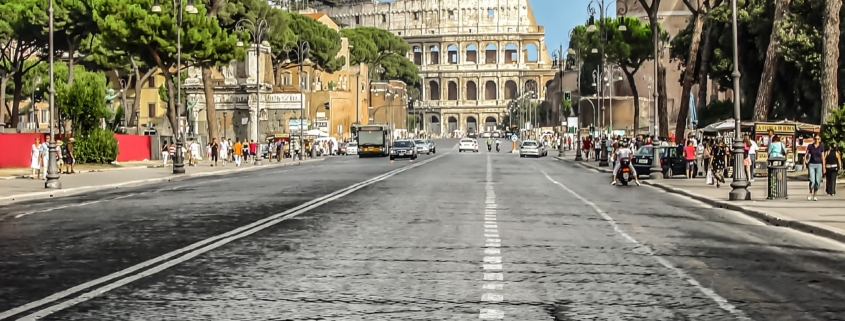 Leonhard Niederwimmer / Pixabay
Leonhard Niederwimmer / Pixabay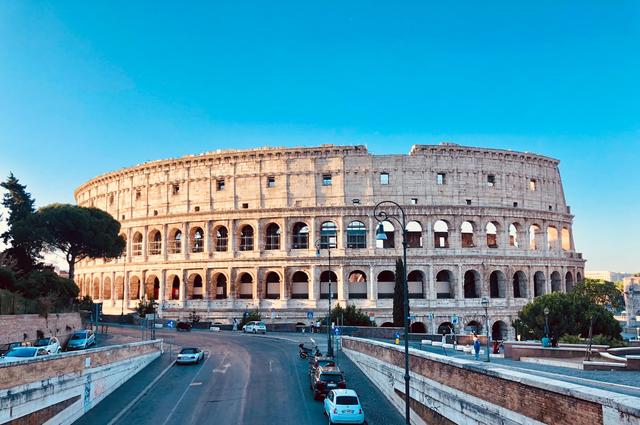
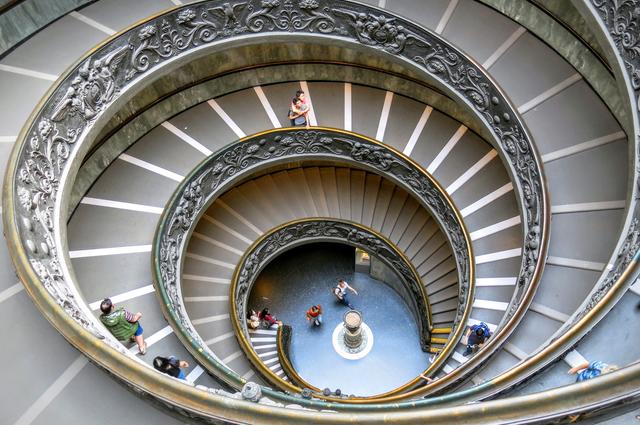
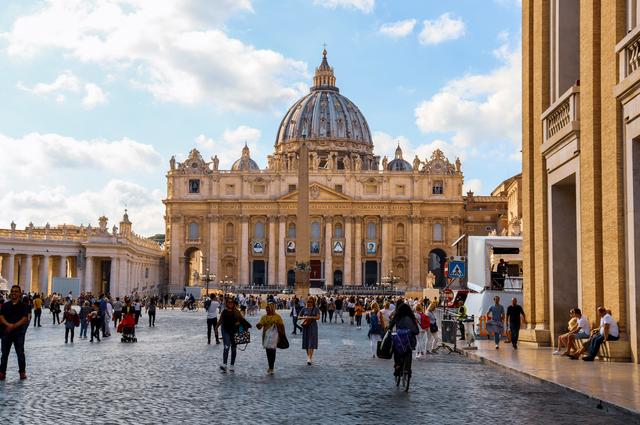
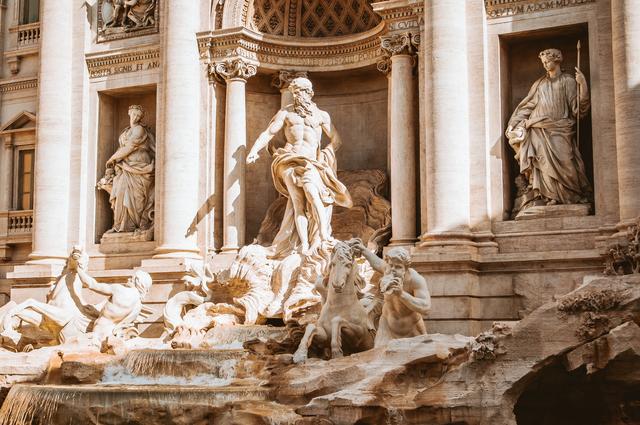
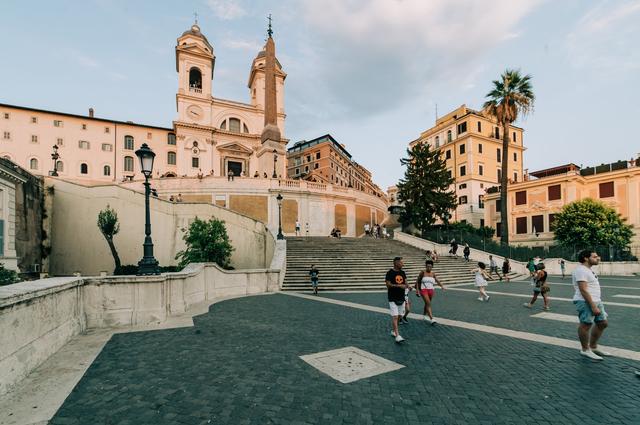
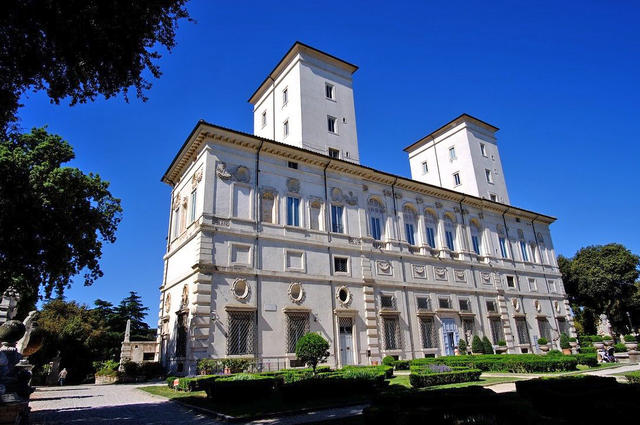
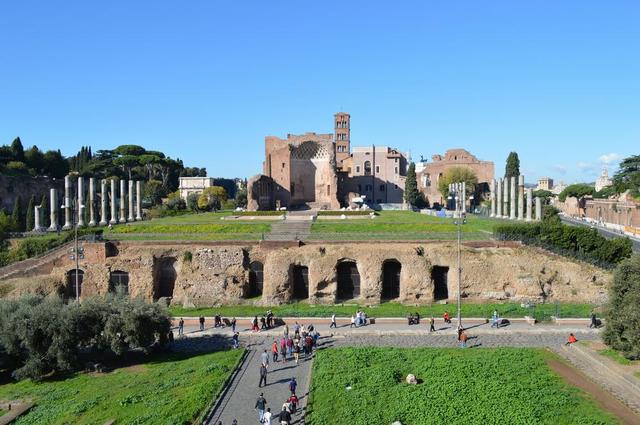
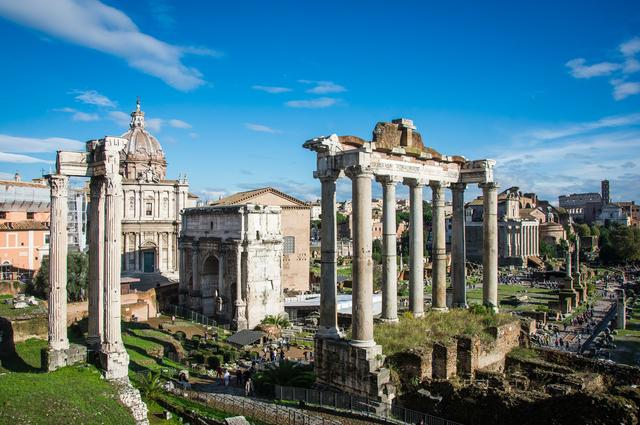
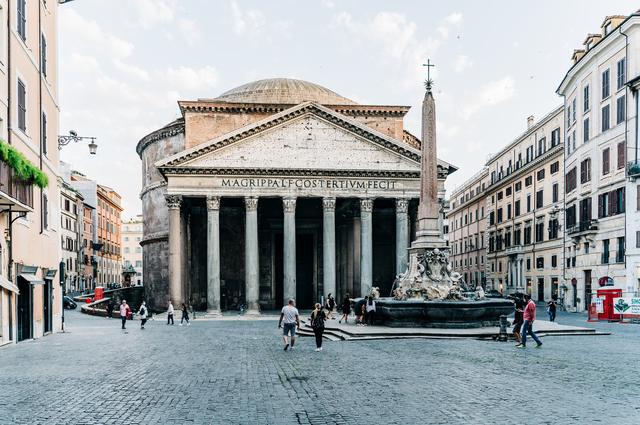
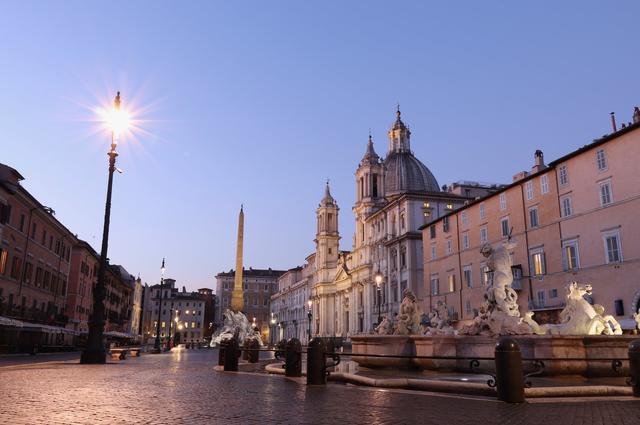
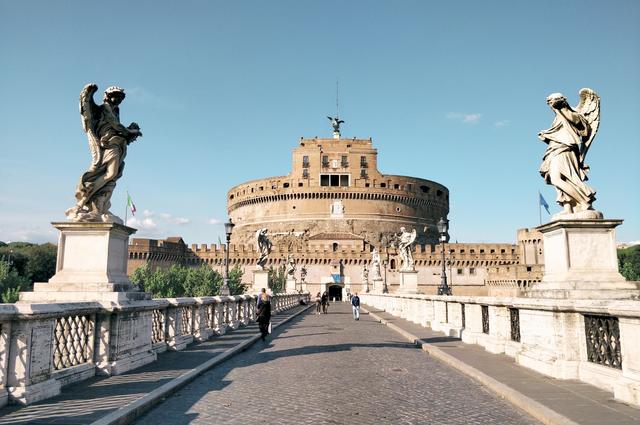
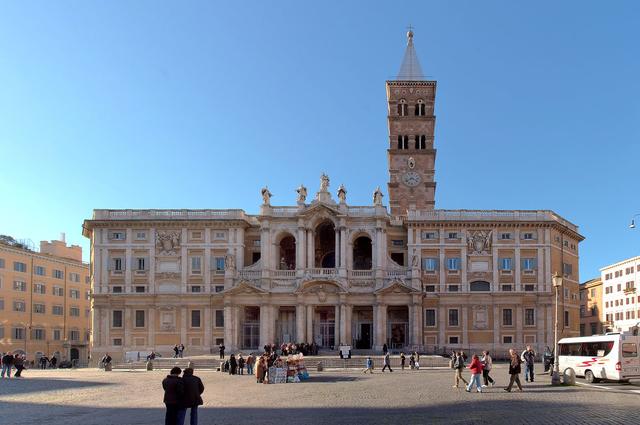
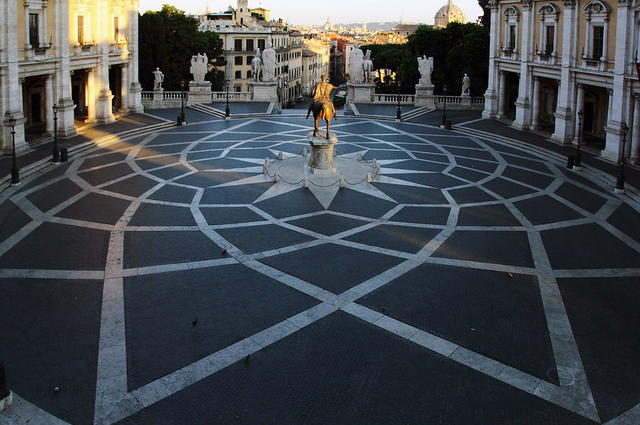
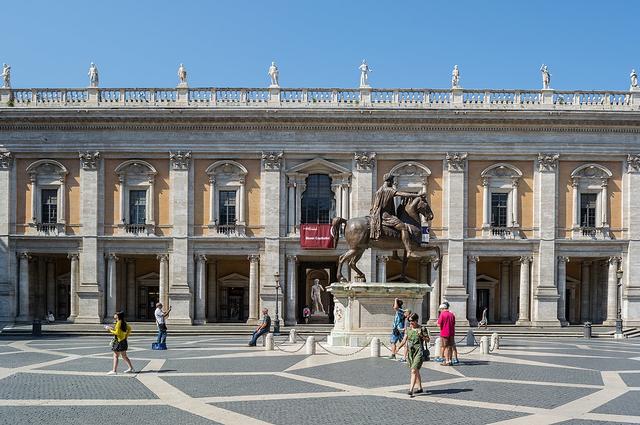
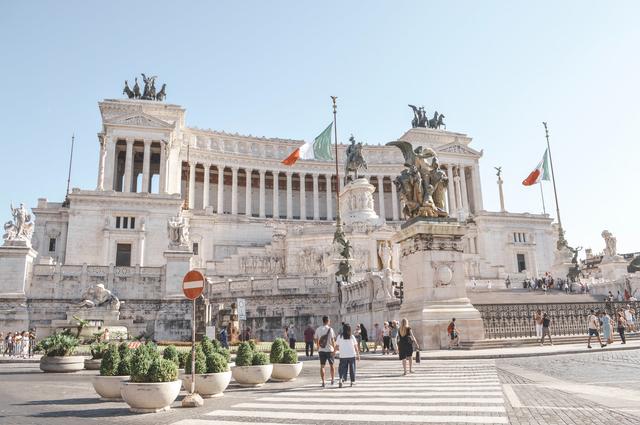
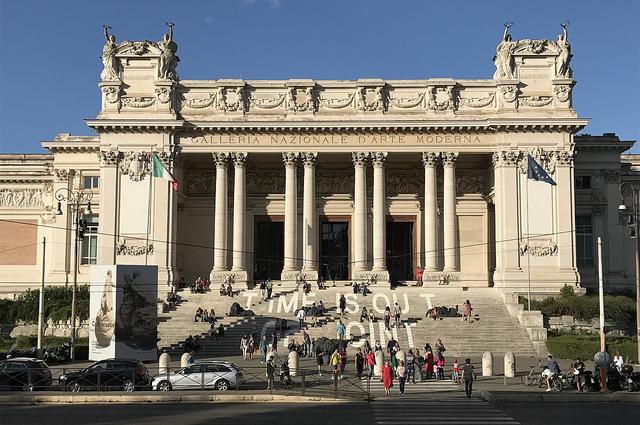
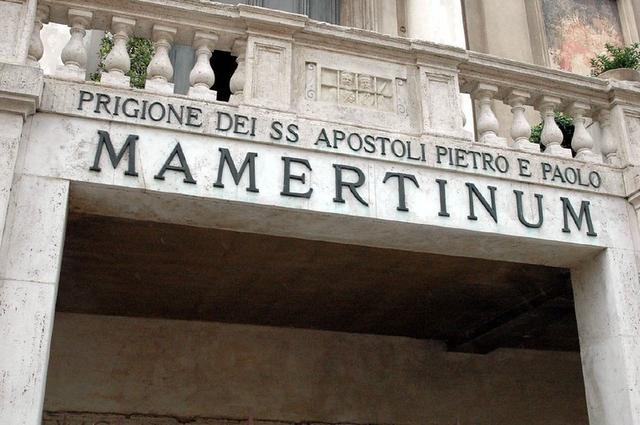
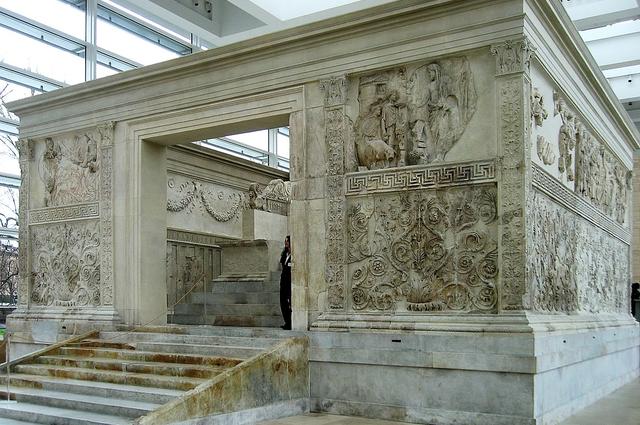
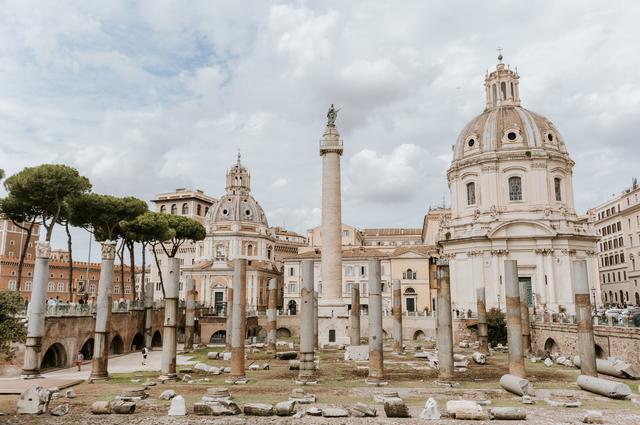

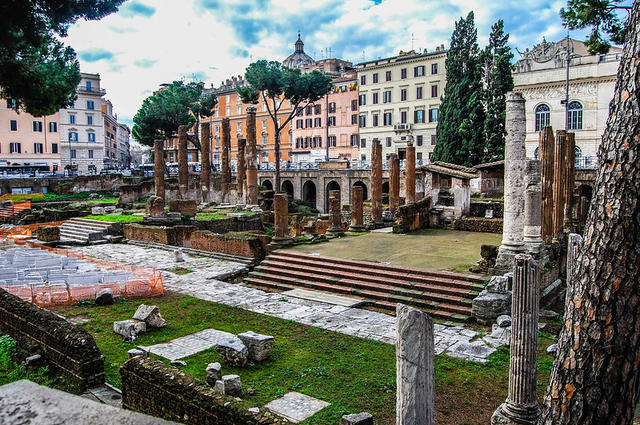
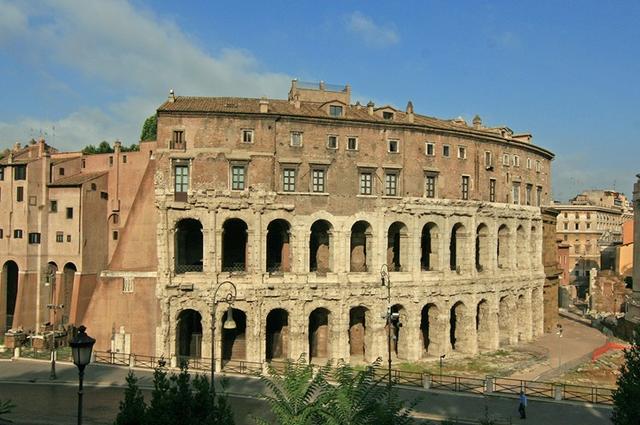
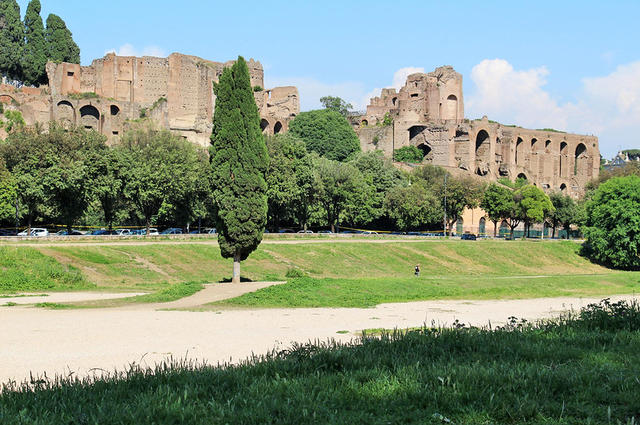
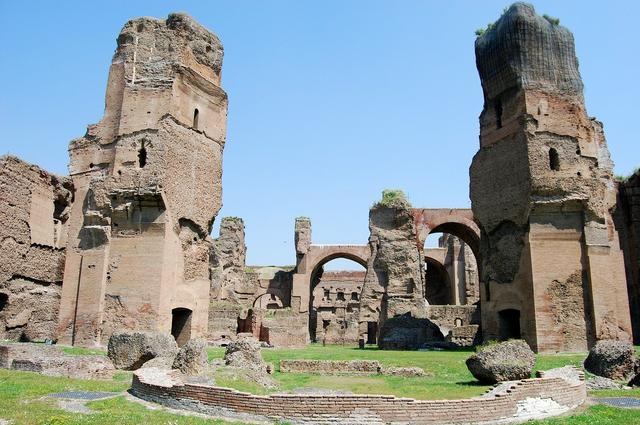
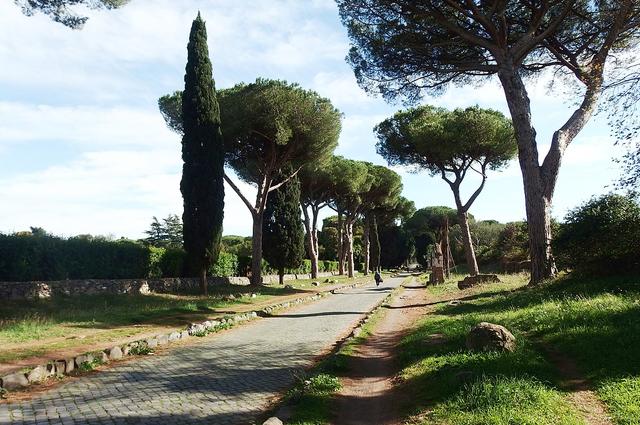
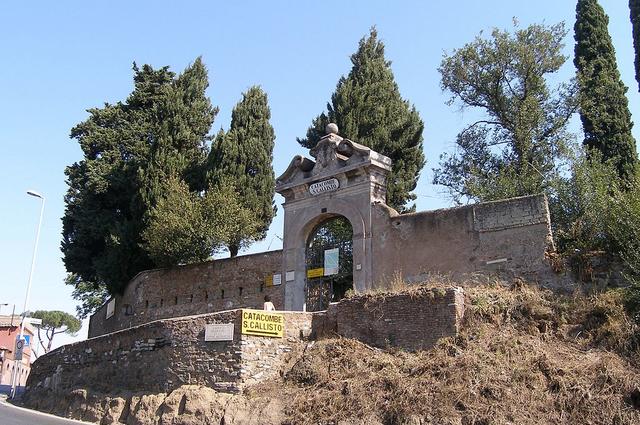
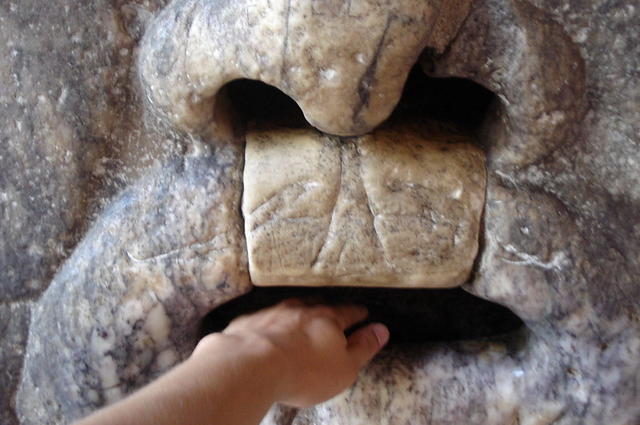
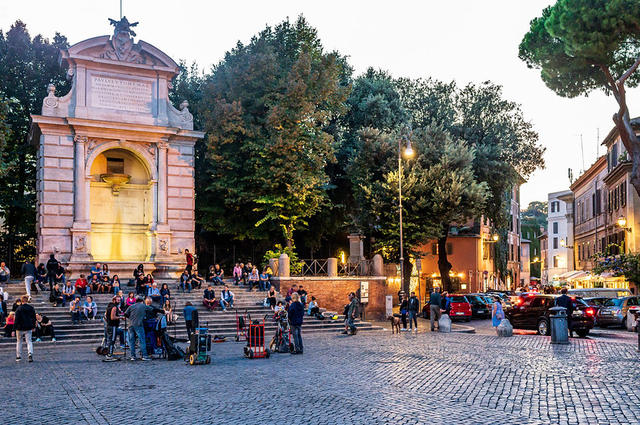
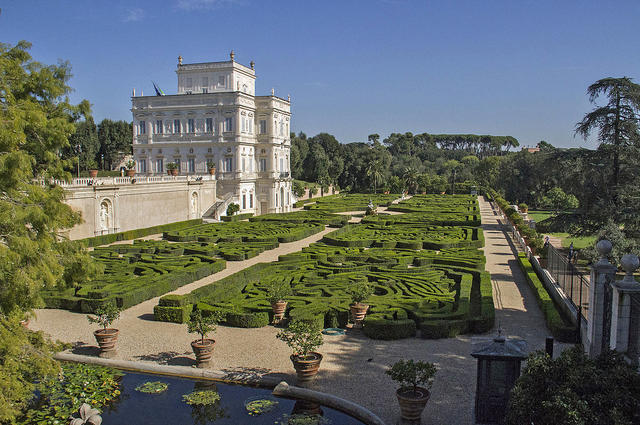
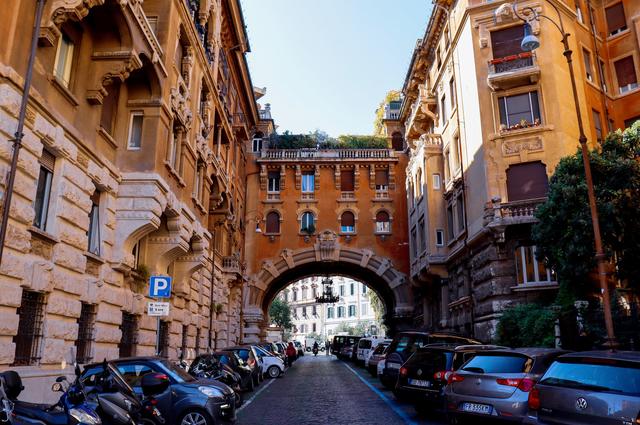
 Danilo Alvesd / Unsplash
Danilo Alvesd / Unsplash
Leave a Reply
Want to join the discussion?Feel free to contribute!